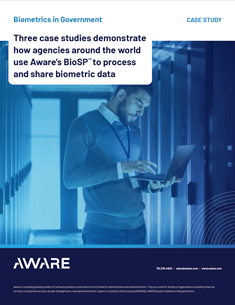The Future of Seamless Travel – How Biometric Technology Helps Facilitate Ease of Travel
January 5, 2023 | 3 minute read
The Future of Seamless Travel – How Biometric Technology Helps Facilitate Ease of Travel
January 3, 2023 | 3 minute read
Travel today is a cumbersome and often frustrating experience. Whether you are traveling for business or pleasure, traveling can be extremely hard. Long lines through security can make getting to the gate an exasperating endeavor. But biometric technology can take the hassle our of travel and make the process smoother.
How do biometrics make the travel process easier and smoother?
Most of the frustrations around travel is security and identity verification. Creating a more seamless travel environment is important to not only the individual, but to society as a whole. Programs are already in use in various airports enabling travelers to move through airport processes, such as boarding, without producing paper documentation because their boarding pass is linked to a biometric identifier through facial recognition technology. But what might the future of seamless travel look and feel like for the average traveler?
How can biometrics streamline the check-in process?
In the near future, check-in processes could be done virtually without the need for a physical passport, making the process faster and more secure. Furthermore, it is also likely that physical passports will no longer be issued, and check-in experiences will be completely digital and instantaneous. Airports will be able to verify travelers’ identities by using facial recognition or similar biometrics. The technology will match the travelers’ physical face to the face stored in the chip of their ePassports that have been previously shared and given permission to use.
Digital Travel Credentials (DTC’s) are the wave of the future.
DTC’s are an exact representation of a biometric passport (ePassport) in digital form. DTC’s use digital technology and biometrics to securely share a passenger’s identity information. They include the person’s personal details such as their facial image and other identifying documentation and is securely stored on the person’s mobile device. When shared with a service provider, such as an airline, that the person has granted permission, it can instantly authenticate their identity, thus making the entire process easier and more secure.
What is TSA PreCheck and how do DTC’s make this process painless?
This program was launched by the Transportation Security Administration (TSA) in 2011 following 911 to pre-screen individuals over the age of 12. It was created to provide low-risk travelers with a smoother experience at airport security checkpoints. It provides travelers with a hassle-free experience and dedicated screening lanes at airports around the globe. With a TSA PreCheck clearance, the traveler does not need to remove their shoes, laptops, 3-1-1 liquids, belts or jackets.
DTCs will also create an expeditious and effortless airport identity authentication experience—a huge improvement from the existing system. While TSA PreCheck offers a faster lane for registered passengers, they don’t actually accelerate the identification process itself. TSA PreCheck is only one small step forward in easing travel. But the encouraging news is TSA is also moving into the digital realm and will begin incorporating DTC’s soon.
With DTCs, the actual identity authentication process is digitized, making it more efficient and secure for travelers making the entire security check-in process at the airport immensely quicker. And this increase in speed and convenience will come with increased security since biometrics are the technology that is the safest and most accurate means of identification and authentication.
Is biometric technology is the future of seamless travel?
Biometric technology is the key enabler to offering passengers a more secure and pleasant travel experience. Passengers actually favor biometric technology to speed up the process of travel and security. According to the 2019 Global Passenger Survey conducted by IATA, 70% of passengers are willing to share their biometric identifiers. With more efficient, streamlined processes and less gridlocks through security, passengers will once again be able to enjoy stress-free travel from the moment they leave their home.
